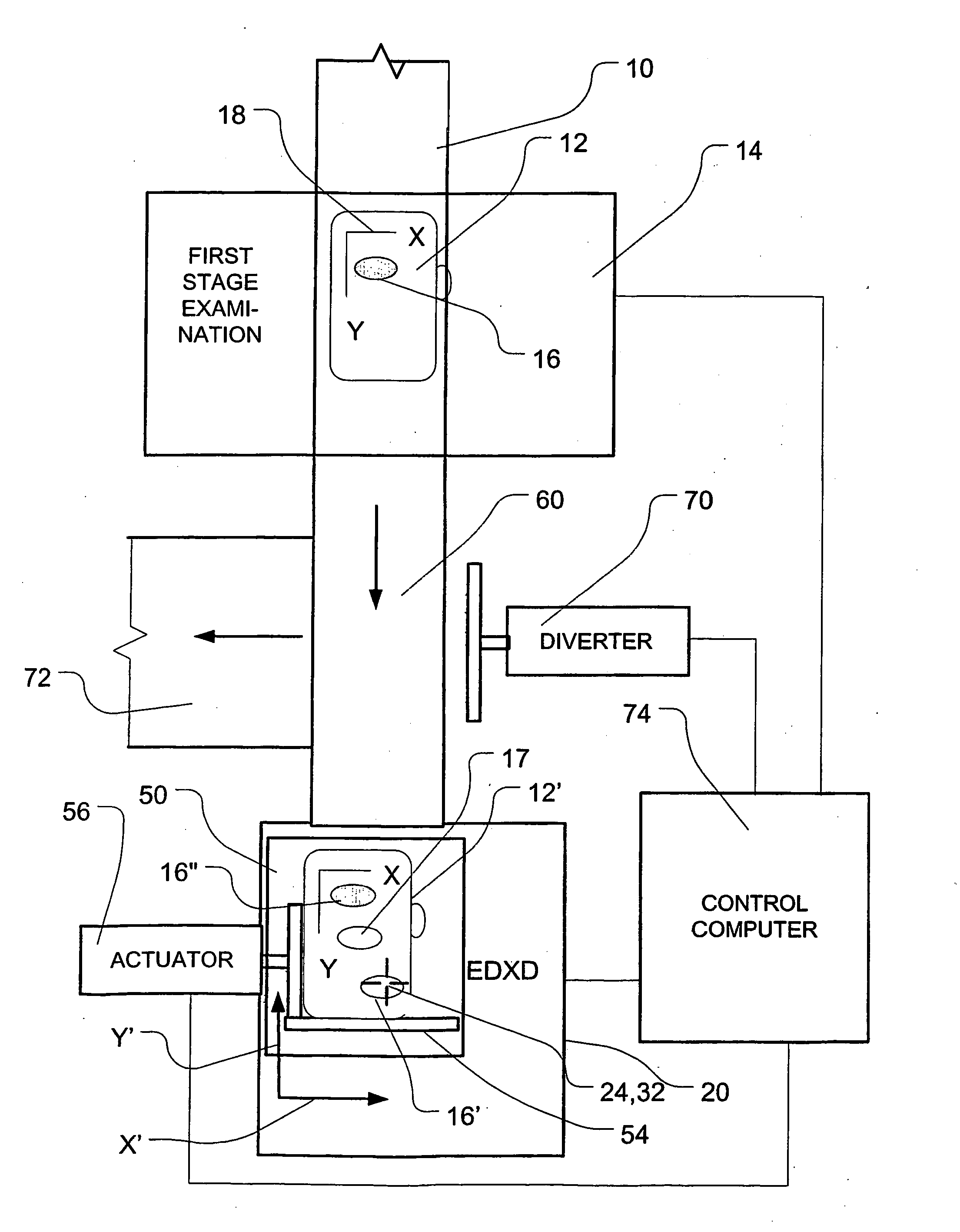Combinatorial contraband detection using energy dispersive x-ray diffraction
a technology of energy dispersive x-ray diffraction and contraband detection, applied in the direction of material analysis using wave/particle radiation, instruments, applications, etc., can solve the problems of not being particularly good at discriminating contraband from other materials, suffering from etc., to achieve good discrimination, high false positive or false negative rates, and good discrimination
- Summary
- Abstract
- Description
- Claims
- Application Information
AI Technical Summary
Benefits of technology
Problems solved by technology
Method used
Image
Examples
Embodiment Construction
[0017] Apparatus according to one embodiment of the invention (FIG. 1) provides a baggage screening system. The apparatus includes an intake conveyor 10 operative to convey a series of articles such as luggage 12 in a downstream direction (towards the bottom of the drawing, as seen in FIG. 1). The intake conveyor feeds into a first stage examination unit 14. The first stage examination unit may be a generally conventional CT scanner equipped with conventional artificial intelligence devices (not shown). The first stage examination unit is arranged, in the normal manner of a CT scanning device, to direct beams of x-rays through articles 12 as the same are presented to the unit 14 and to determine the x-ray transmissivity of each object along numerous different axes. From this transmissivity data, the system assembles a data set representing x-ray absorptivity in each of numerous voxels and, thus, generates a data set representing either a complete three-dimensional image of the objec...
PUM
| Property | Measurement | Unit |
|---|---|---|
| acceleration | aaaaa | aaaaa |
| accelerations | aaaaa | aaaaa |
| accelerations | aaaaa | aaaaa |
Abstract
Description
Claims
Application Information
 Login to View More
Login to View More - Generate Ideas
- Intellectual Property
- Life Sciences
- Materials
- Tech Scout
- Unparalleled Data Quality
- Higher Quality Content
- 60% Fewer Hallucinations
Browse by: Latest US Patents, China's latest patents, Technical Efficacy Thesaurus, Application Domain, Technology Topic, Popular Technical Reports.
© 2025 PatSnap. All rights reserved.Legal|Privacy policy|Modern Slavery Act Transparency Statement|Sitemap|About US| Contact US: help@patsnap.com



